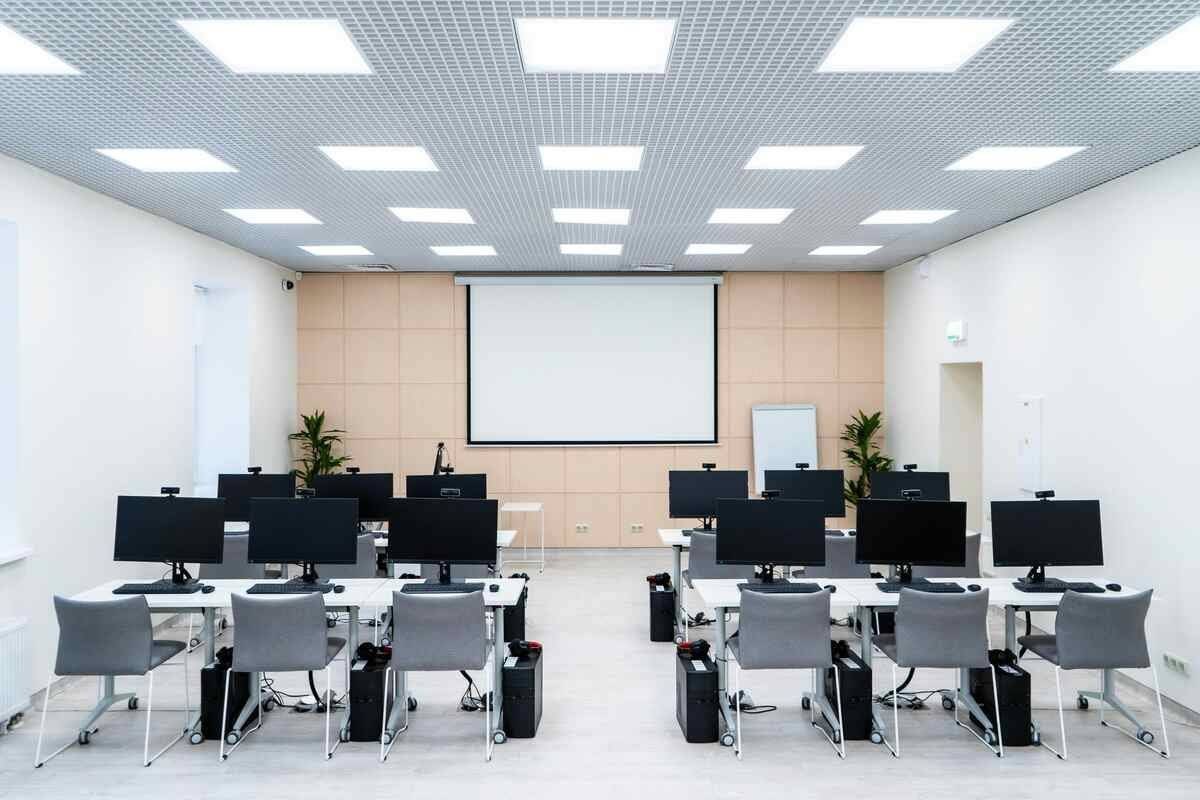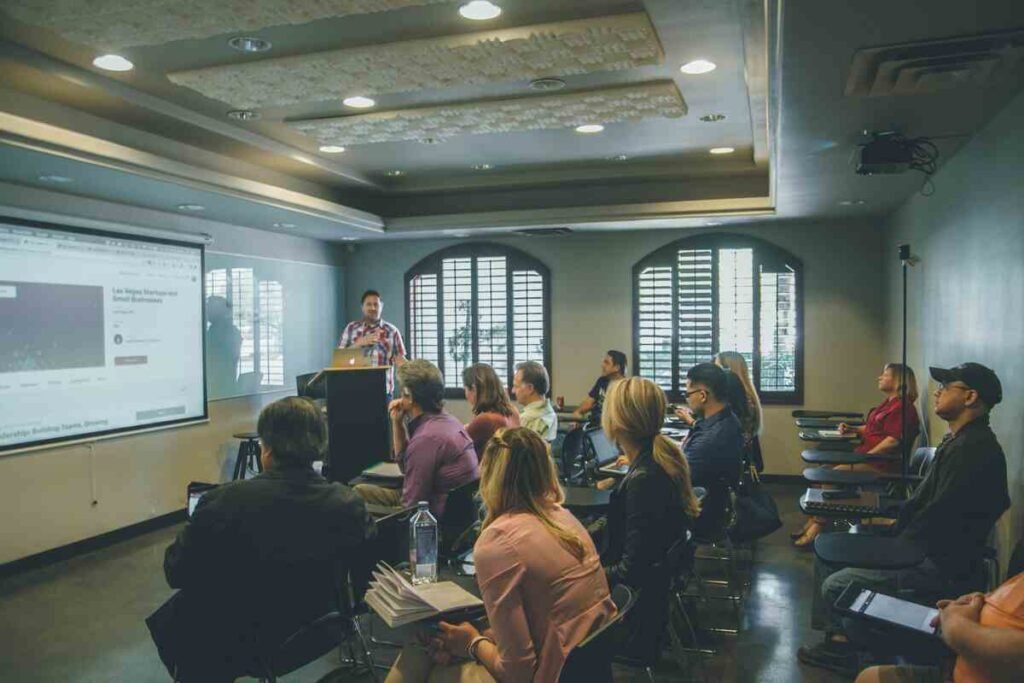Now Reading: Classroom 15X—Reshaping the Future of Learning
-
01
Classroom 15X—Reshaping the Future of Learning
Classroom 15X—Reshaping the Future of Learning

The Evolution of Education: Enter Classroom 15X
Education is undergoing a massive transformation, and Classroom 15X is at the forefront of this revolution. As technology reshapes industries, traditional classrooms are evolving into dynamic, technology-driven spaces that foster personalized learning, collaboration, and innovation. But what exactly is Classroom 15X, and how is it reshaping the future of learning? Let’s explore.
The traditional classroom model, which has remained largely unchanged for centuries, is struggling to meet the demands of modern learners. The world is changing rapidly, and education must evolve alongside it. The integration of artificial intelligence, immersive technologies, and data-driven learning models is making education more efficient, engaging, and accessible. Classroom 15X is not just a concept; it is a necessary shift in the way we educate future generations.
Educators, students, and policymakers must recognize the importance of Classroom 15X and proactively adopt its principles. By embracing this transformation, we can prepare students for a future where knowledge is dynamic, skills are ever-evolving, and critical thinking is more valuable than rote memorization.
What is Classroom 15X?
Classroom 15X is a forward-thinking educational model that integrates advanced technology, adaptive learning, and flexible teaching methods to enhance student engagement and learning outcomes. Unlike traditional classrooms, Classroom 15X leverages tools such as AI-powered learning assistants, virtual reality (VR), augmented reality (AR), and smart analytics to create an interactive and student-centric learning experience.
Unlike the industrial-age classroom model, which emphasized uniformity and standardization, Classroom 15X recognizes that every learner is unique and requires a tailored approach to education. By leveraging digital tools, this model provides real-time feedback, allowing educators to adjust instruction based on individual student performance. Moreover, it encourages student agency, empowering learners to take control of their education by exploring topics that interest them and working at their own pace.
Key Features of Classroom 15X:
- AI-Driven Personalized Learning: Adapts lessons based on individual student performance, ensuring that every learner progresses at an optimal pace.
- Immersive Technologies: Uses VR and AR to create engaging, real-world simulations that make learning more interactive and hands-on.
- Collaborative Digital Platforms: Enables real-time communication and teamwork among students and educators, breaking down geographical barriers.
- Smart Classrooms: Equipped with IoT devices, AI-driven assessments, and interactive whiteboards to enhance engagement and efficiency.
- Gamification: Integrates game-based learning strategies to boost motivation, retention, and problem-solving skills.
By integrating these features, Classroom 15X ensures that learning is adaptive, engaging, and future-ready.
How Classroom 15X is Reshaping Learning

Photo by Kenny Eliason on Unsplash
1. From One-Size-Fits-All to Personalized Learning
Traditional education follows a rigid structure where all students receive the same lessons at the same pace. Classroom 15X changes this by using AI-driven adaptive learning systems that adjust content based on a student’s strengths and weaknesses. This means that learners can progress at their own pace, reinforcing concepts they struggle with while advancing quickly through topics they grasp easily.
Personalized learning fosters greater student engagement and motivation because lessons are relevant to their needs. AI-powered platforms analyze learning patterns and suggest customized exercises, allowing teachers to focus on individual student growth rather than standard curriculum delivery. This shift leads to higher retention rates, improved academic performance, and greater enthusiasm for learning.
Example: Platforms like Khan Academy and Duolingo use AI algorithms to personalize learning experiences, ensuring students receive tailored support that meets their unique needs.
2. Enhancing Engagement with Virtual and Augmented Reality
Imagine learning about ancient Egypt by virtually walking through the pyramids or understanding human anatomy by interacting with a 3D hologram. VR and AR transform passive learning into an immersive experience, making subjects more engaging and memorable.
Traditional teaching methods often struggle to capture students’ attention, but immersive technologies provide a multi-sensory learning experience that enhances comprehension and retention. For example, medical students can practice surgeries using VR before working on real patients, and history students can explore ancient civilizations as if they were actually there.
Data Insight: According to a report by PwC, VR learners retain information 4x faster than traditional learners and are 275% more confident in applying their skills.
3. Bridging the Gap with Real-World Skills
Modern careers demand critical thinking, creativity, and collaboration—skills often underemphasized in traditional classrooms. Classroom 15X promotes project-based learning, problem-solving exercises, and real-world applications, ensuring students are prepared for future job markets.
Industries are shifting rapidly due to automation and technological advancements. By focusing on soft skills, interdisciplinary learning, and problem-solving, Classroom 15X ensures that students graduate with competencies that are in high demand.
Case Study: Finland’s education system integrates project-based learning, allowing students to work on interdisciplinary projects that mirror real-world challenges, better preparing them for professional success.
4. Fostering Collaboration Beyond Borders
With cloud-based learning management systems (LMS) and collaboration tools like Google Classroom and Microsoft Teams, Classroom 15X enables students and teachers to connect globally, sharing knowledge and working on cross-cultural projects.
Online learning has removed geographical barriers, allowing students from different countries to work together, exchange ideas, and develop a global perspective on education and problem-solving.
Real-World Impact: Schools adopting collaborative digital platforms report a 32% increase in student participation and a 22% boost in knowledge retention.
The Challenges and Opportunities of Classroom 15X
While Classroom 15X presents exciting possibilities, there are also challenges to address:
Challenges:
- Digital Divide: Not all students have access to high-speed internet and smart devices.
- Teacher Training: Educators need upskilling to integrate technology effectively.
- Screen Time Concerns: Balancing digital learning with offline activities is crucial.
- Data Privacy & Security: With increased use of AI and cloud-based platforms, data protection must be a priority.
Opportunities:
- EdTech Innovations: The rise of AI tutors and blockchain-based certifications.
- Hybrid Learning Models: Blending traditional and digital methods for maximum impact.
- Global Collaboration: Expanding learning opportunities beyond geographical limitations.
- Sustainability in Education: Digital classrooms reduce the need for paper-based resources, aligning with eco-friendly initiatives like those covered on EcoUrbanBloom.
Conclusion: The Future of Learning is Here
Classroom 15X is not just a futuristic concept—it’s already shaping the way we teach and learn today. By combining technology, personalization, and collaboration, this model creates an engaging, effective, and future-ready education system.
For educators and institutions, the time to embrace Classroom 15X is now. By staying adaptable and integrating next-gen learning strategies, we can prepare students for a world where knowledge is limitless and learning never stops.
For more insights on sustainable and future-forward innovations, visit EcoUrbanBloom. Also, check out how Ydesi is redefining digital branding in the modern era.
Featured Image by RUT MIIT on Unsplash
FAQs
1. What is Classroom 15X?
Classroom 15X is a modern, technology-driven learning model that integrates AI, VR, AR, and personalized learning methods to create an interactive and adaptive educational environment. It aims to replace traditional teaching methods with a more student-centric approach.
2. How does Classroom 15X differ from traditional classrooms?
Unlike traditional classrooms that follow a one-size-fits-all approach, Classroom 15X leverages data-driven insights and advanced digital tools to tailor learning experiences to individual students, making education more engaging, efficient, and accessible.
3. What are the key technologies used in Classroom 15X?
- Artificial Intelligence (AI) for personalized learning paths.
- Virtual and Augmented Reality (VR/AR) for immersive learning experiences.
- Smart Classrooms equipped with IoT devices and interactive whiteboards.
- Gamification techniques to enhance engagement.
- Cloud-based Learning Management Systems (LMS) for global collaboration.
4. What are the benefits of Classroom 15X?
- Personalized Learning: AI adapts lessons to individual students.
- Enhanced Engagement: Immersive VR and AR experiences.
- Real-World Skill Development: Emphasis on critical thinking and collaboration.
- Global Learning Opportunities: Digital tools enable cross-border educational exchange.
5. How does AI improve the learning experience?
AI-driven platforms analyze student performance and adjust the curriculum accordingly. This ensures that students receive targeted support, immediate feedback, and customized exercises to enhance their learning journey.
6. What role do teachers play in Classroom 15X?
Teachers act as facilitators rather than traditional instructors. They guide students through digital learning experiences, provide mentorship, and use technology to tailor lessons according to student needs.
7. Is Classroom 15X suitable for all age groups?
Yes, Classroom 15X can be adapted for all education levels, from primary school to higher education and professional training. The flexibility of digital tools allows educators to modify learning approaches based on student maturity and subject complexity.
8. How does Classroom 15X address accessibility and inclusivity?
With AI-driven adaptive learning, Classroom 15X provides customized support for students with different learning abilities. Text-to-speech, screen readers, and multi-language support enhance accessibility for diverse learners.
9. What challenges does Classroom 15X face?
- Digital Divide: Unequal access to technology among students.
- Teacher Training: Need for educators to upskill in digital tools.
- Privacy Concerns: Ensuring student data security and ethical AI use.
- Screen Time Balance: Maintaining a healthy blend of online and offline learning.
10. Can Classroom 15X be implemented in existing schools?
Yes, many schools are integrating Classroom 15X principles gradually by introducing AI-powered learning platforms, smart classrooms, and blended learning models that combine traditional and digital methods.
11. How does Classroom 15X prepare students for the future job market?
By fostering critical thinking, creativity, collaboration, and problem-solving skills, Classroom 15X equips students with competencies that align with evolving industry demands, ensuring they are future-ready.










